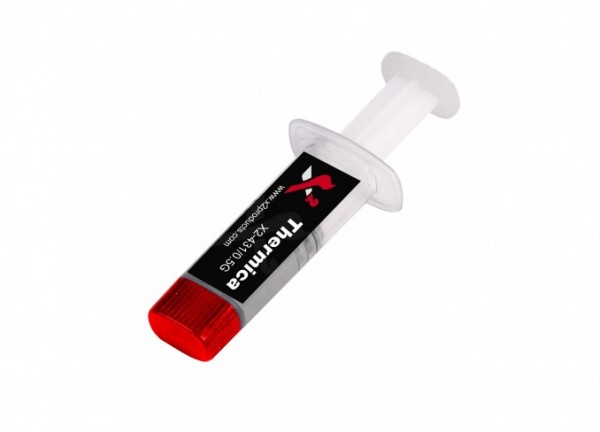X2 Makes High-Viscosity Thermal Interface Material
Dutch manufacturer X2 joins the race with thermal compounds.
X2 has made a new thermal interface material: the X2 Thermica.
The grease is built to be usable with both CPUs and GPUs, and is said to be suitable for high-wattage processors. It can be used with both air cooling as well as water cooling blocks.
Technical specifications include a >5W/m-K thermal conductivity, which is managed with an ingredient ratio of 10 percent silicon compounds, 45 percent carbon compounds, as well as 45 percent metal oxide compounds. It is also a higher-viscosity substance, making it harder to accidentally get messy.
X2 will ship the product in a single syringe, which will contain half a gram of TIM, written to be good for two processor installations. MSRP pricing is set at $6.99 for the US.
Get Tom's Hardware's best news and in-depth reviews, straight to your inbox.
Niels Broekhuijsen is a Contributing Writer for Tom's Hardware US. He reviews cases, water cooling and pc builds.
-
Amdlova harder can't be good for some people or air cooler. some people push amount of pressure on motherboard with air cooler. point to break the motherboard.Reply -
hotroderx I know this has been done in the past but I like to see Tom's take all the new and old Thermal Paste and Test them. I don't mean a standard test either that just has stock temps and voltages. I am thinking more like they cherry pick one of there best OC processors push it as hard as they can then try the different paste out on it. When it comes to over clocking a 4-5 degree c difference can be huge. Another test I like to see is them do with thermal paste. Take one of the AMD 9590 overclock it then check temps with the different paste. Both test they could very it up One set of results with Closed Looped Water Cooler the other with Fan's. That way we could see if maybe Thermal Paste makes a bigger differences when it comes to Water Coolers. The test wouldn't be about the processors but the paste its self.Reply -
vaughn2k suggest to include the mesh size of the thermal product... one of the consideration for thermal management is BLT (not bacon, lettuce and tomato :D) or bond line thickness, and it greatly affects junction temperature.Reply -
danwat1234 hotroderx when they do the test, I hope they also do a longevity test. Arctic MX2 from my experience has very good longevity in hot environments and good performance, others such as Coolaboratory Liquid Ultra and possibly others do not, thermal conductivity takes a dive over timeReply -
Soul_keeper I'd rather see a test in a controlled environment using some kind of custom hotplate. I think this would take out a lot of the variance in testing and provide the best scientific numbers for the thermal conductivity.Reply -
alextheblue Replyhotroderx when they do the test, I hope they also do a longevity test. Arctic MX2 from my experience has very good longevity in hot environments and good performance, others such as Coolaboratory Liquid Ultra and possibly others do not, thermal conductivity takes a dive over time
I like MX2. It's fairly easy to work with, provides good all-around performance in a variety of cooling setups, is affordable, and as you say long lasting. I used to say the same about Arctic Silver many years ago but MX2 eclipsed it some time ago.On the other side of the spectrum, some of these "less mess" high viscosity compounds are a PITA to work with and/or require a lot of clamping pressure to get good results. No thank you.I'd rather see a test in a controlled environment using some kind of custom hotplate. I think this would take out a lot of the variance in testing and provide the best scientific numbers for the thermal conductivity.
I seem to recall THG did this a long time ago for heatsink tests. I can't recall the specific reason they stopped. No doubt there were issues, whether it was accuracy problems or just wanting more real-world numbers.

